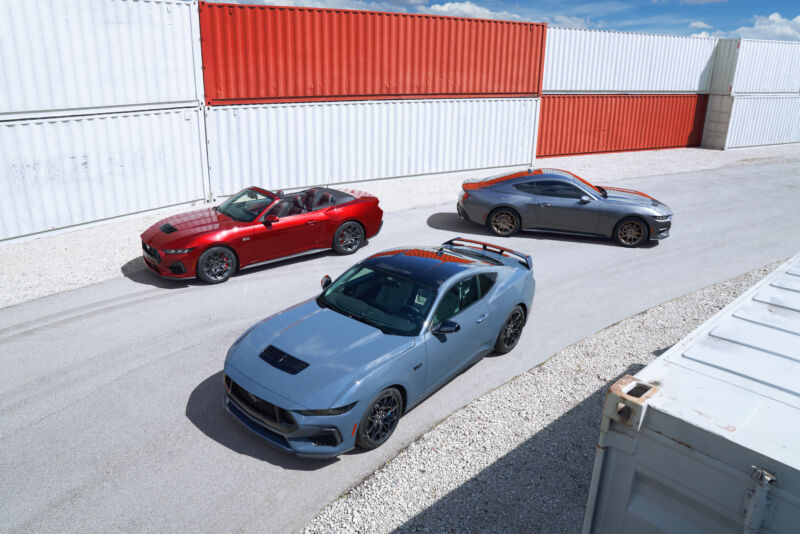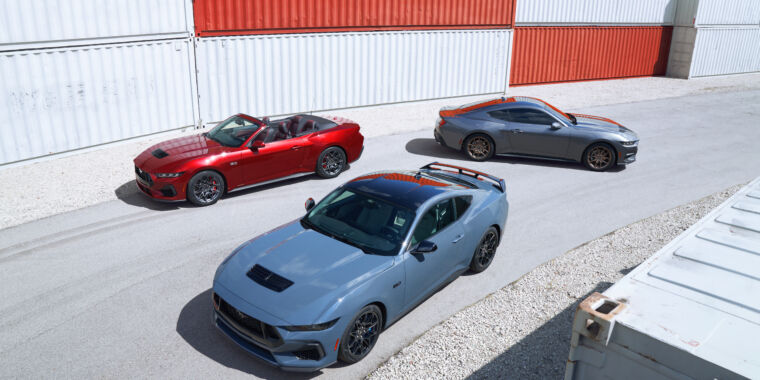
Ford
People have been tinkering with and modifying vehicles since not long after the invention of the automobile. As an activity, it exploded in the wake of World War II, as surplus machinery mixed with bored young people with a bit of mechanical know-how looking for a bit of a thrill. From hot rods and desert speed racers to the import-tuning scene at the turn of the century, being able to soup up one’s ride has been a core aspect of car enthusiasm. But that may be a thing of the past, if the next Ford Mustang is any indication.
Ford debuted its 2024 Mustang in September. The seventh-generation car doesn’t deviate much from the recipe that made the people’s pony car such a big hit all these years: a two-door body that’s recognizable as a Mustang and a choice of gasoline engines up front that drive the wheels at the back. There’s no hybrid or electrified version—other than the Mustang Mach-E, of course, but that’ll just start a flame war in the comments.
But as you might expect of a car being unveiled in 2022, no previous Mustang has been quite as digital as the incoming model. Advanced driver assists abound, there’s a full digital cockpit, and among its connected features is Amazon Alexa integration.
To be able to do all that, the next Mustang will use Ford’s latest electrical architecture, called FNV (fully networked vehicle), also seen in other new Fords like the aforementioned Mustang Mach-E or the F-150 Lighting. As you might hope, this includes layered protection against cybersecurity threats, and if anomalies are detected—say, an engine with more turbo pressure or a different ECU—things are going to stop working.
In fact, the Mustang’s chief engineer, Ed Krenz, told Ford Authority that tuning the next Mustang would be “much more difficult.” The OEM says it’s open to working with tuners on third-party enhancements for both the EcoBoost and V8 engines, and I’m inclined to believe it; other Ford product lines openly embrace the aftermarket, like the Bronco and its myriad add-ons, as well as the DIY maker crowd, as the Maverick pickup truck proves. But lots of added effort usually means plenty of extra cost.
It is unfortunate that the need to protect vehicles from bad actors with an Internet connection is being met with difficulty working on or modifying them outside of an official repair network or beyond factory specifications. But it’s not the first time that has happened.
In 2020 Massachusetts voted overwhelmingly to extend an existing “right to repair” law that required OEMs to sell proprietary diagnostics and tools to third parties like independent repair shops so that the law also covered connected cars. But it was written in such a way that it requires connected cars or telematics systems to use a standardized open data platform as a way of accessing their online features, with very short notice.
That’s antithetical to the idea of cybersecurity, said a coalition of automakers, as well as the National Highway Traffic Safety Administration, and currently the result is that automakers like Subaru and Kia have simply cut off Massachusetts-registered connected cars from their platforms. Here’s hoping that in the future we can find a way for digital security to coexist with modability.








